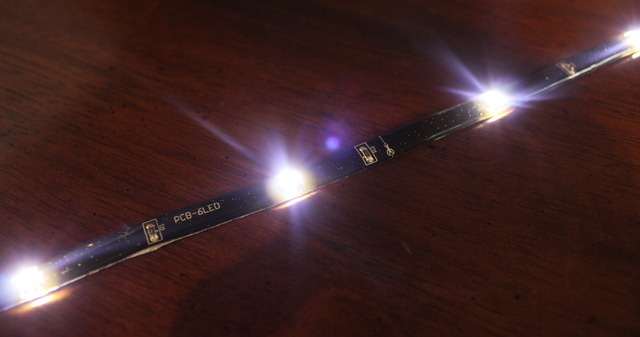
It's hard to stare at a computer monitor for hours after dark, with the rest of the lights turned off in your home or office. Still, this is how many of us play games, myself included. When Antec offered to send the soundscience halo 6 LED bias lighting kit—which is a long official name—I had nothing to lose. If it didn't work, I could write a short, snarky post dismissing it as hokum. If it did work, my eyes would be more comfortable.
The $13 product came in a small box, and it took under a minute to install. You simply remove the adhesive backing from the 14.5 inches of LED lighting, attach to the back of your monitor, and connect the cable to an empty USB port. The strip lit up, I sat down, and began an epic six-hour gaming session for my Deus Ex: Human Revolution review.
Before I share my thoughts, I wanted to check out if other people were using similar solutions. Timothy J. Seppala writes for Sound and Vision, and he's often who I turn to when it comes to setting up new displays or purchasing monitors. When I purchased my last television, a Panasonic plasma screen, he told me about the pluses of bias lighting, and when I asked his thoughts on this story, he seemed a trifle annoyed I was only just now adding lighting hardware to my setup. This is a man who gives people test patterns the way my grandmother gives people lemon candies.

"It works because it provides enough ambient light in the viewing area that your pupils don't have to dilate as far. This makes for less eyestrain when a flashbang gets thrown your way or a bolt of lightning streams across the screen," he told Ars. "Because the display is no longer the only object emitting light in the room, colors and black levels appear richer than they would in a totally black environment. Bias lighting is key in maintaining a reference quality picture and reducing eye-strain."

After doing more research I found this is why movie theaters aren't completely dark, and the effect is more pronounced when viewing a 3D image, due to the dimmer screen. I was surprised at the results: my eyes did feel better after long sessions on the computer, and even the muscles of my face felt more relaxed. The next night I tried my marathon session without the lights and found I was right back to strained eyes and discomfort by the end of my gaming. It's always possible there's a placebo effect at play here, but after trying both ways, the results were both immediate and strong: the lighting helps.
The effect isn't an industry secret, and you can try this yourself if you have a set of LED lights to attach to the back of your monitor. Antec's product is easy to use, works well, and is inexpensive. This only makes sense if you do heavy computing or gaming at night, but for those who are active on their computers at that time or want to improve the lighting conditions in their home office, there are certainly worse ways to spend $13.
reader comments
115